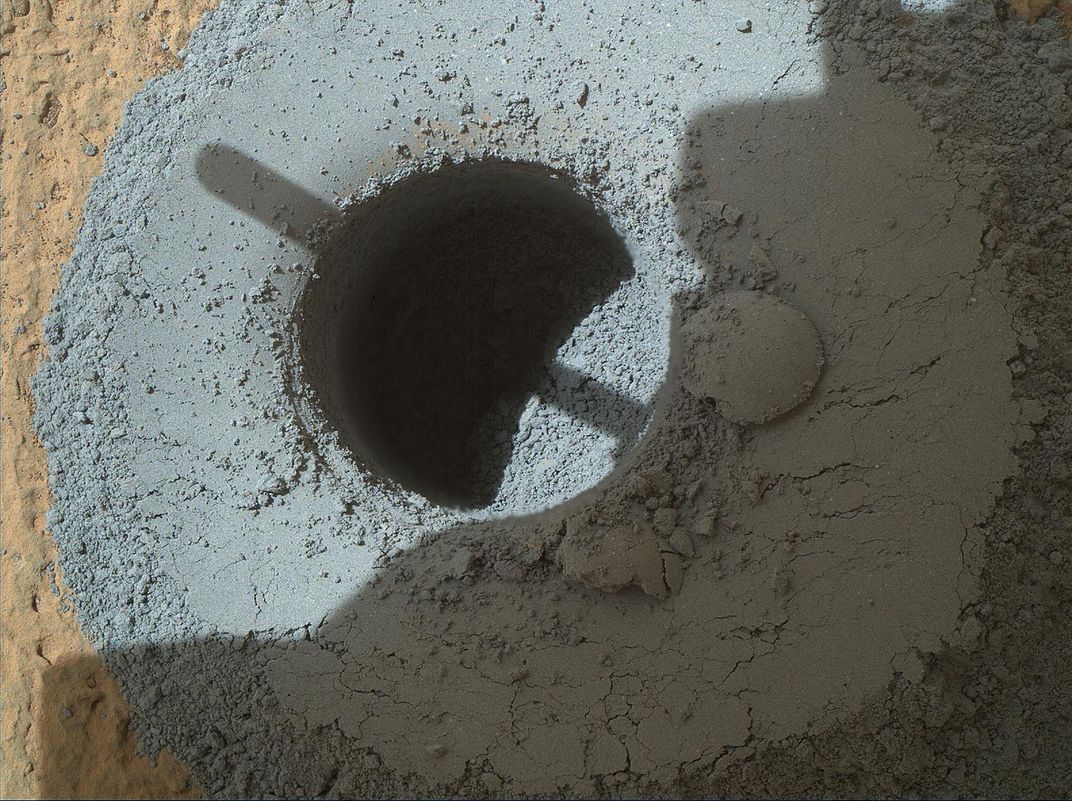Why a Smithsonian Researcher Is Tracking the Wind on Mars
When Perseverance lands, Mariah Baker will collect data that will prepare the way for crewed missions to the Red Planet
/https://tf-cmsv2-smithsonianmag-media.s3.amazonaws.com/filer/e6/b4/e6b47422-eb01-44f1-8630-e124db7326cd/mariah_baker_interview_shot.jpg)
When Perseverance touches down February 18 on the Red Planet, Mariah Baker will be studying the data coming back on the live feed from a strategically important location: her living room here on Earth.
While a member of the Mars mission team, the post-doctoral fellow at the Smithsonian’s Center for Earth and Planetary Studies at the National Air and Space Museum will be reviewing facts and figures relayed back by the rover from her laptop at home. “Because of Covid-19 protocols, I will be working remotely, not at the Jet Propulsion Laboratory in California,” Baker says.
The JPL and NASA project, which includes a rocket-powered sky crane and car-sized rover, will land in Jezero crater to search for signs of ancient microbial life on Mars. While that happens, Baker will be reviewing for evidence of “aeolian processes.” No, she won’t be looking for little green aliens on the surface of Mars. Baker studies the wind-driven movement of sand and dust. Aeolian comes from the name of the Greek god Aeolus, the keeper of the winds.
“Prior to robotic exploration of Mars, we didn’t think there was a lot of wind-driven activity because the atmosphere is so thin,” she says. “However, we’ve discovered that Mars is a very active place. These missions give us a chance to study aeolian activity from the surface.”
As Mars missions go, Baker is an old pro. She has been a scientist on Curiosity since 2015 and InSight since 2018. For Perseverance, Baker plans to conduct similar research to what she did on those expeditions.
“I use images taken from the spacecraft and meteorological data to understand how wind is transporting sand and dust across the surface—and sometimes on the spacecraft,” she says. “It’s really important for our scientific understanding of geologic and climactic processes on Mars. This helps us keep landed instruments safe. Potentially, for human explorers in the future, it helps us understand the surface environment and risks posed by dust and sand.”
Kathryn Stack Morgan, Mars 2020 deputy project scientist at the Jet Propulsion Laboratory in California, says Baker’s work is crucial to understanding how conditions changed over the past billion years from a planet with large amounts of water to the dry and dusty surface we see today. Equipped with anemometer, spectrometer and other scientific equipment, the rover will enable her to look closely at particulate matter and figure out what is happening.

“Mariah’s research will help us understand how ancient Mars evolved,” she says. “By learning how wind and sand move around the planet, we get a better idea of the evolutionary process that led to what is there now on modern Mars. This will help us with future exploration as we move forward to a manned mission with human explorers.”
One of the things Baker will look at is the movement of piles of dust like the ones created when Curiosity landed on Mars in 2012. “The Curiosity rover drilled holes and left powder behind,” Stack Morgan says. The new Mars team will make similar drill holes and Baker will track those piles to see how they have changed over the course of the mission. "This will allow us to document how quickly they have moved because of wind so we understand how these processes have developed,” says Stack Morgan.
Mission mavens will get a chance to see Baker and other scientists from the Center for Earth and Planetary Science on television just before the landing. The Smithsonian Channel is premiering “Making Tracks on Mars” this week with shows airing February 17, 18 and 19.
On the program, Baker will be in the middle of a sand dune on Earth explaining how wind shapes the Martian surface. Also featured will be the Smithsonian’s Jim Zimbelman, Sharon Purdy, John Grant, Bruce Campbell and Ross Irwin.
Fortunately, “Making Tracks on Mars” was filmed well in advance of the Perseverance landing scheduled for February 18, which is a good thing because viewers won’t see dark circles under Baker’s eyes. Once the mission begins, team will have to work odd, late-night hours on Earth to align with the Martian day, which is 40 minutes longer than a day here.
“There will be times when I will be up all night in my living room,” she says. “It will be interesting.”
/https://tf-cmsv2-smithsonianmag-media.s3.amazonaws.com/accounts/headshot/dave.png)
/https://tf-cmsv2-smithsonianmag-media.s3.amazonaws.com/accounts/headshot/dave.png)